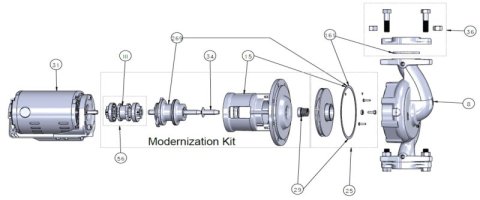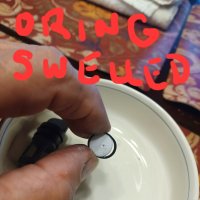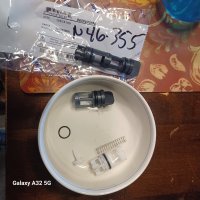Hi - first of all thanks for everybody that contributes to these forums, I've learned so much here from the experts willing to help.
My situation:
NPE-240A-NG installed when the home was built (2019)
Dedicated recirculation return line, uses the water heater's internal recirculation pump
For the last few months, we'd been having an issue where filling the bath start hot but eventually spewed cold water. Used this forum to diagnose a possible problem with our recirc check valve. Removing it did in fact show that the o-ring had become dislodged and valve was stuck open. So I ordered a new one and installed that a few days ago.
Since then I've noticed that it takes a long time to get hot water from any faucet, (90 seconds or more to get hot, used to be just a few seconds) and I'm now wondering if our internal recirculation pump might be bad. The pump does turn on when the unit starts up, and does turn on every half hour for a few minutes, but I'm worried its not actually moving water.
I called Navien and they (reluctantly, it seems like they REALLY hate talking to homeowners) gave me some information about some relevant diagnostic readings (hit the wrench button and then +/- to cycle through readings).
A: Flow rate for the whole unit (gpm)
B: Water temperature leaving unit (fahrenheit)
G: Flow rate for the heat exchanger (gpm)
R: Water temp leaving the heat exchanger (fahrenheit)
So when I can hear the recirc pump turn on every half hour or so, I would expect the G reading to be non-zero (since it's sending water through the hot water lines), but it stays at 0.0. When I just turn a hot faucet on however, I see a non-zero G reading (~1 gpm).
I'm also a bit worried that the new check valve might be the problem, since (a) this started happening just after installing it, and (b) if it was failing to allow water through it seems like that would be hard to differentiate from a failing pump.
It looks like these pumps are reasonably easy to replace, but I'm curious to know if there are other things I should check or tests I could perform to prevent unnecessary work/costs. Thanks!
My situation:
NPE-240A-NG installed when the home was built (2019)
Dedicated recirculation return line, uses the water heater's internal recirculation pump
For the last few months, we'd been having an issue where filling the bath start hot but eventually spewed cold water. Used this forum to diagnose a possible problem with our recirc check valve. Removing it did in fact show that the o-ring had become dislodged and valve was stuck open. So I ordered a new one and installed that a few days ago.
Since then I've noticed that it takes a long time to get hot water from any faucet, (90 seconds or more to get hot, used to be just a few seconds) and I'm now wondering if our internal recirculation pump might be bad. The pump does turn on when the unit starts up, and does turn on every half hour for a few minutes, but I'm worried its not actually moving water.
I called Navien and they (reluctantly, it seems like they REALLY hate talking to homeowners) gave me some information about some relevant diagnostic readings (hit the wrench button and then +/- to cycle through readings).
A: Flow rate for the whole unit (gpm)
B: Water temperature leaving unit (fahrenheit)
G: Flow rate for the heat exchanger (gpm)
R: Water temp leaving the heat exchanger (fahrenheit)
So when I can hear the recirc pump turn on every half hour or so, I would expect the G reading to be non-zero (since it's sending water through the hot water lines), but it stays at 0.0. When I just turn a hot faucet on however, I see a non-zero G reading (~1 gpm).
I'm also a bit worried that the new check valve might be the problem, since (a) this started happening just after installing it, and (b) if it was failing to allow water through it seems like that would be hard to differentiate from a failing pump.
It looks like these pumps are reasonably easy to replace, but I'm curious to know if there are other things I should check or tests I could perform to prevent unnecessary work/costs. Thanks!



